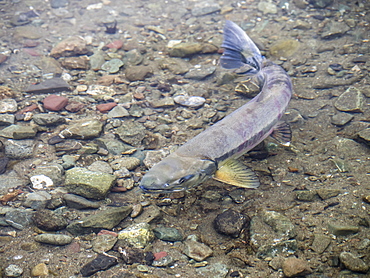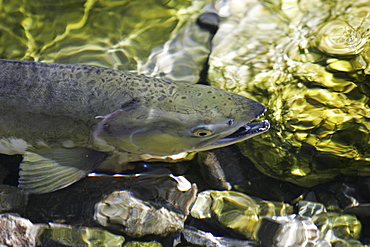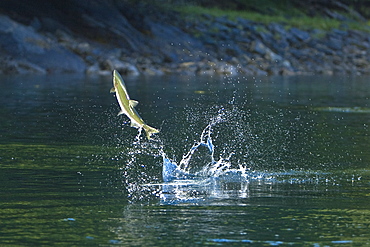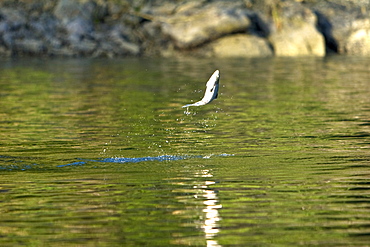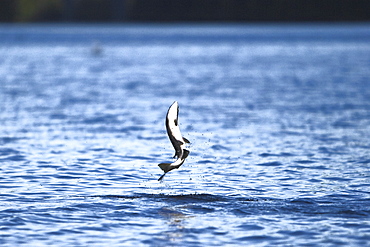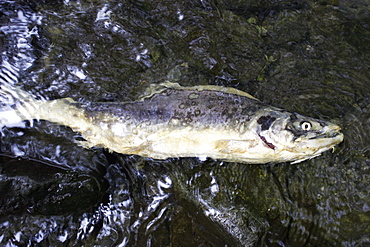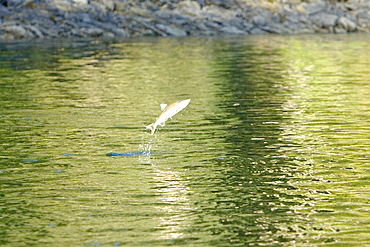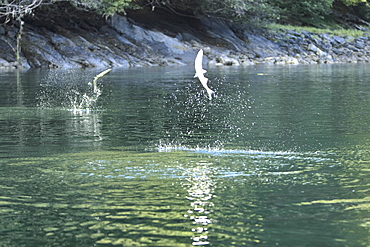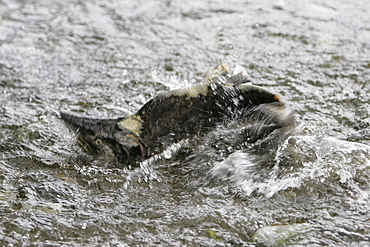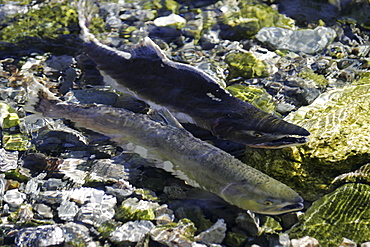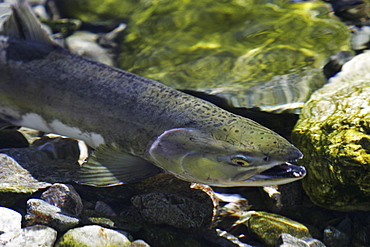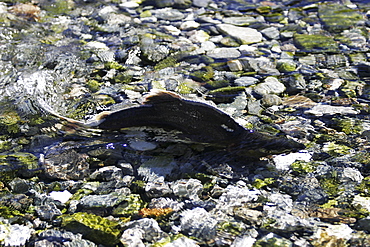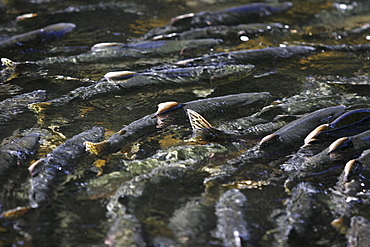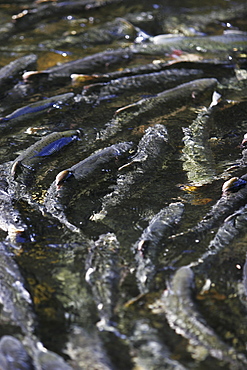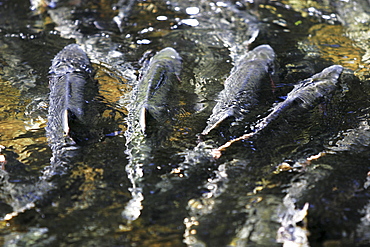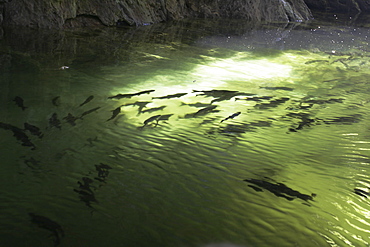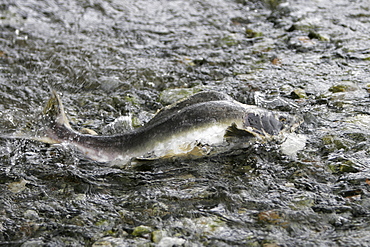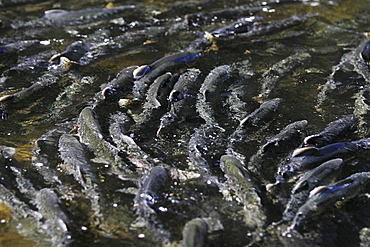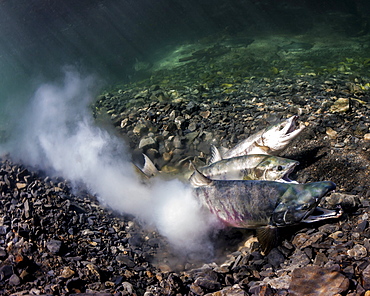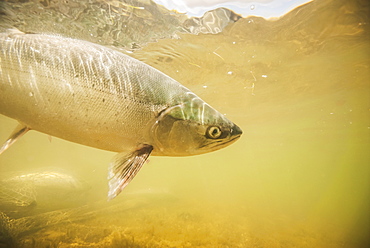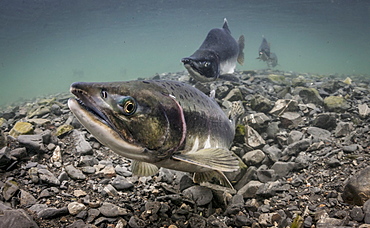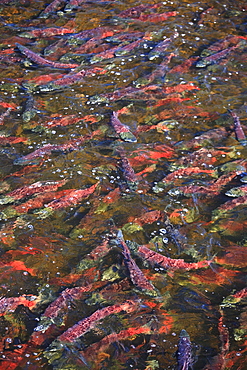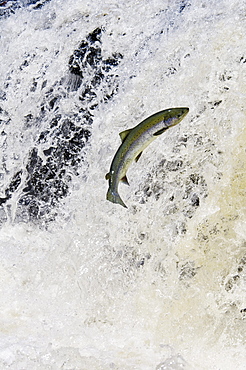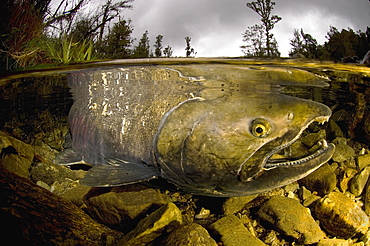Results
31 results found

Pink salmon (Oncorhynchus gorbuscha), spawning season, Prince William Sound, Alaska, United States of America, North America
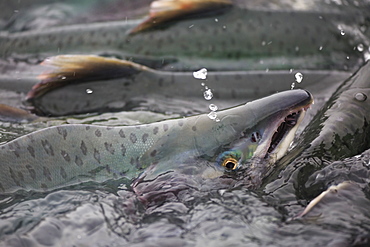
Pink salmon (Oncorhynchus gorbuscha), spawning season, Port Valdez, Alaska, United States of America, North America
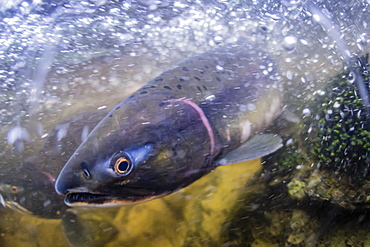
UW view of female pink salmon, Oncorhynchus gorbuscha, in the Indian River spawning near Sitka, Alaska, United States of America

View of a male pink salmon, Oncorhynchus gorbuscha, in the Indian River spawning near Sitka, Alaska, United States of America
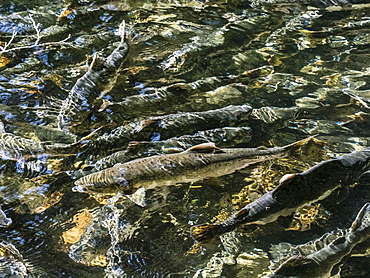
Adult pink salmon, Oncorhynchus gorbuscha, returning to the Indian River to spawn near Sitka, Alaska, United States of America

Leaping pink salmon (Oncorhynchus gorbuscha) gathering to spawn at Lake Eva on Chichagof Island, Alaska, United States of America, North America
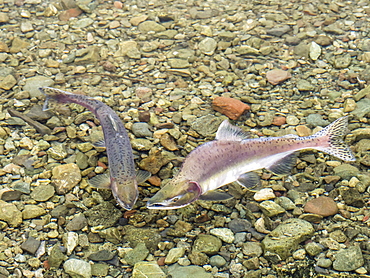
Spawning pink salmon (Oncorhynchus gorbuscha) in a small river in Petra Bay, Kamchatka, Russia, Eurasia
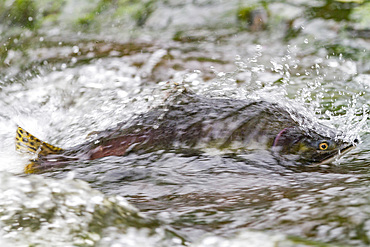
Dead and dying pink salmon (Oncorhynchus gorbuscha) gathering after the spawn just outside of Sitka, Alaska, United States of America
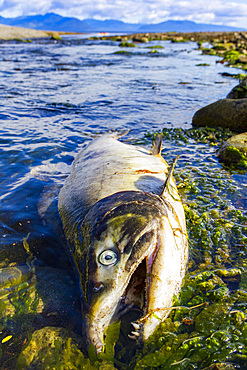
Dead and dying pink salmon (Oncorhynchus gorbuscha) gathering after the spawn just outside of Sitka, Alaska, United States of America
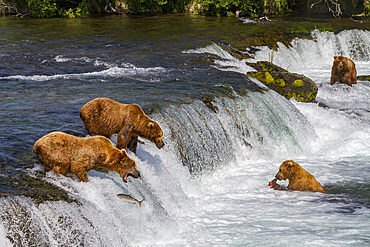
Adult brown bears (Ursus arctos) foraging for salmon at the Brooks River, Katmai National Park, Alaska, United States of America
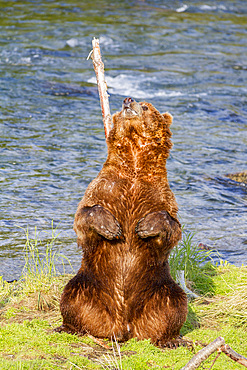
Adult brown bear (Ursus arctos) scratching its back on tree, Brooks River, Katmai National Park near Bristol Bay, Alaska, United States of America
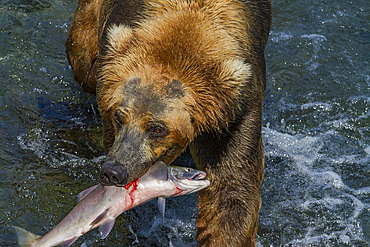
Adult brown bear (Ursus arctos) foraging for salmon at the Brooks River, Katmai National Park, Alaska, United States of America
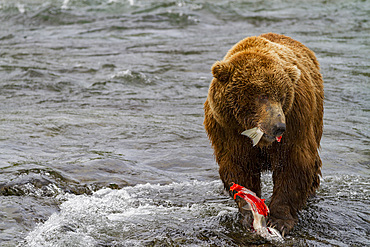
Adult brown bear (Ursus arctos) foraging for salmon at the Brooks River, Katmai National Park, Alaska, United States of America
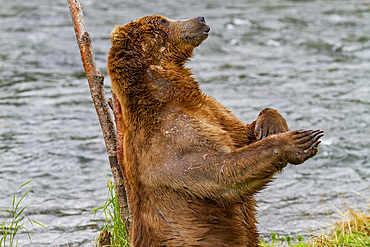
Adult brown bear (Ursus arctos) scratching its back on tree, Brooks River, Katmai National Park, near Bristol Bay, Alaska, United States of America
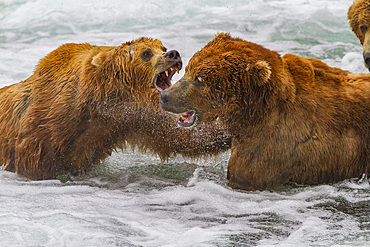
Adult brown bears (Ursus arctos) foraging for salmon at the Brooks River, Katmai National Park, Alaska, United States of America
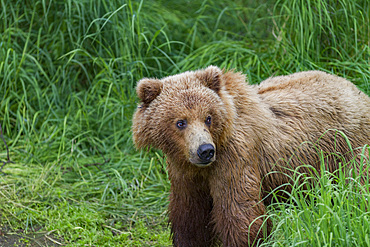
Adult brown bear (Ursus arctos) foraging for salmon at the Brooks River, Katmai National Park, Alaska, United States of America
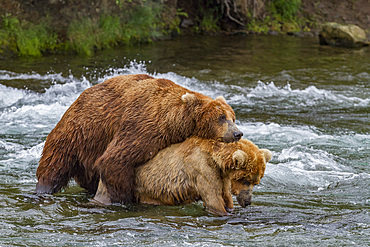
Adult brown bears (Ursus arctos) courtship behaviour, Brooks River, Katmai National Park near Bristol Bay, Alaska, United States of America
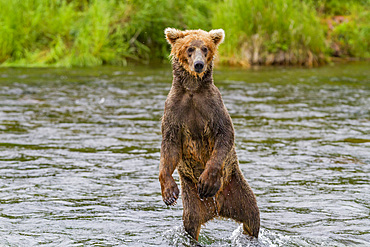
Adult brown bear (Ursus arctos) foraging for salmon at the Brooks River, Katmai National Park, Alaska, United States of America
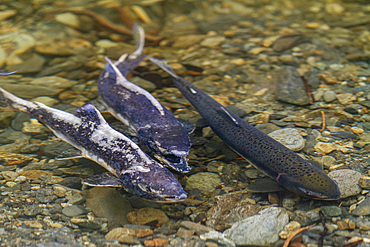
Dead and dying pink salmon (Oncorhynchus gorbuscha) gathering to spawn just outside of Sitka, Southeast Alaska, United States of America, North America

Sockeye salmon (Oncorhynchus nerka), spawning on the Russian River, a 13-mile-long river on the Kenai Peninsula, Alaska, United States of America, North America
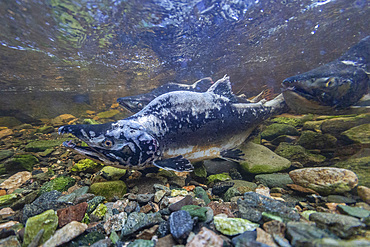
Adult pink salmon, Oncorhynchus gorbuscha, spawning in Fox Creek, Chichagof Island,, Southeast Alaska, USA.
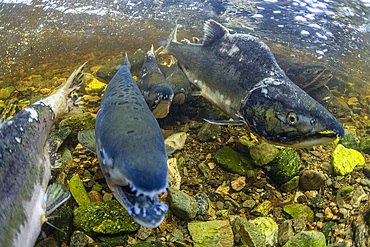
Adult pink salmon, Oncorhynchus gorbuscha, spawning in Fox Creek, Chichagof Island,, Southeast Alaska, USA.
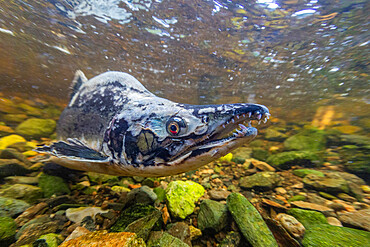
Adult pink salmon, Oncorhynchus gorbuscha, spawning in Fox Creek, Chichagof Island,, Southeast Alaska, USA.
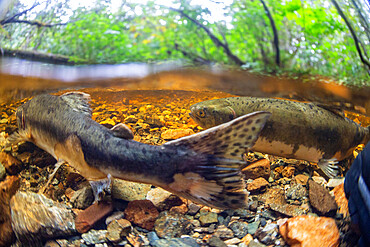
Adult pink salmon, Oncorhynchus gorbuscha, spawning in Fox Creek, Chichagof Island,, Southeast Alaska, USA.
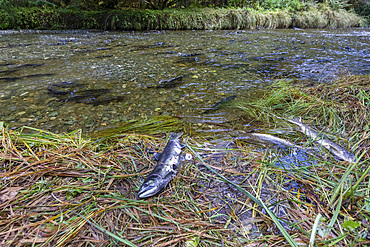
Adult pink salmon, Oncorhynchus gorbuscha, spawning in Fox Creek, Chichagof Island,, Southeast Alaska, USA.
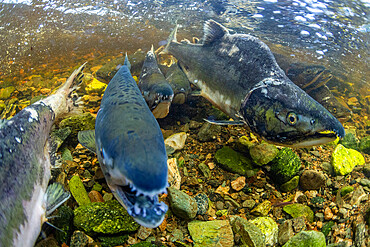
Adult pink salmon, Oncorhynchus gorbuscha, spawning in Fox Creek, Chichagof Island,, Southeast Alaska, USA.
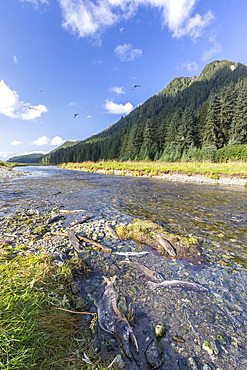
Adult pink salmon, Oncorhynchus gorbuscha, spawning in Port Althorp, Chichagof ,, Southeast Alaska, USA.
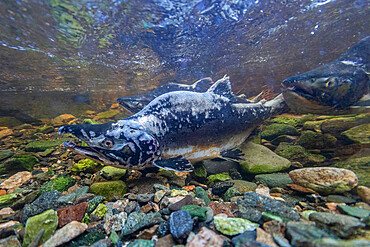
Adult pink salmon, Oncorhynchus gorbuscha, spawning in Fox Creek, Chichagof Island,, Southeast Alaska, USA.
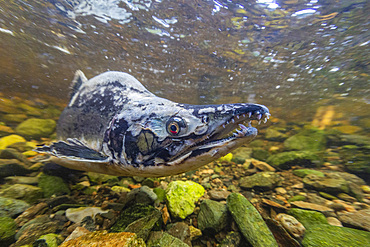
Adult pink salmon, Oncorhynchus gorbuscha, spawning in Fox Creek, Chichagof Island,, Southeast Alaska, USA.
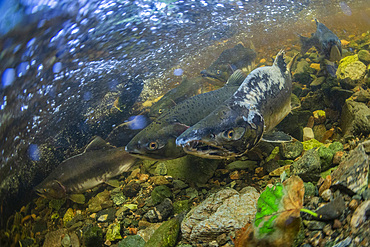
Adult pink salmon, Oncorhynchus gorbuscha, spawning in Fox Creek, Chichagof Island,, Southeast Alaska, USA.
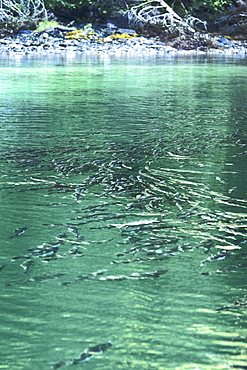
Spawning pink salmon (Oncorhynchus gorbuscha) gathering to run upstream in Red Bluff Bay, Southeast Alaska, USA
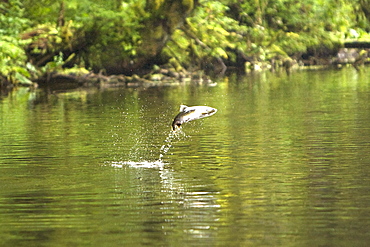
Spawning pink salmon (Oncorhynchus gorbuscha) leaping fromn the water in a stream running out of Lake Eva, Southeast Alaska, USA
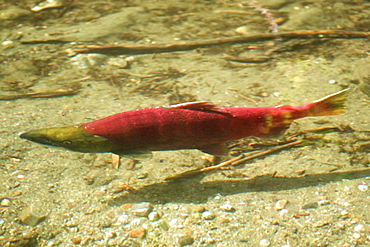
Spawning sockeye salmon (Oncorhynchus nerka), also called red salmon or blueback salmon gathering to run upstream in the Mendenhall River just outside Juneau, Southeast Alaska, USA. Pacific Ocean
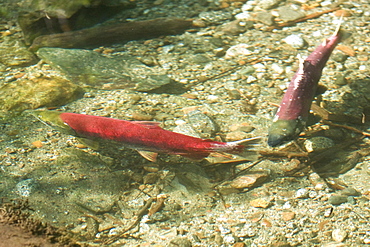
Spawning sockeye salmon (Oncorhynchus nerka), also called red salmon or blueback salmon gathering to run upstream in the Mendenhall River just outside Juneau, Southeast Alaska, USA. Pacific Ocean

Spawning pink salmon (Oncorhynchus gorbuscha) gathering to run upstream in Red Bluff Bay, Southeast Alaska, USA

Dead and dying pink salmon (Oncorhynchus gorbuscha) gathering after the spawn just outside of Sitka, Southeast Alaska, USA
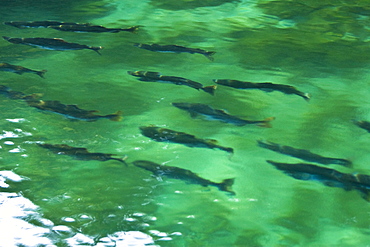
Spawning pink salmon (Oncorhynchus gorbuscha) gathering to run upstream in Red Bluff Bay, Southeast Alaska, USA
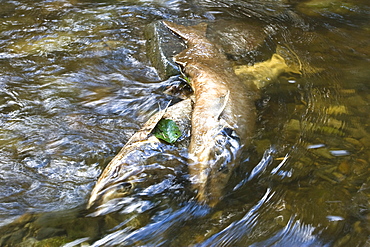
Dead and dying pink salmon (Oncorhynchus gorbuscha) gathering after the spawn just outside of Sitka, Southeast Alaska, USA

Spawning sockeye salmon (Oncorhynchus nerka), also called red salmon or blueback salmon gathering to run upstream in the Mendenhall River just outside Juneau, Southeast Alaska, USA. Pacific Ocean

Dead and dying pink salmon (Oncorhynchus gorbuscha) gathering after the spawn just outside of Sitka, Southeast Alaska, USA
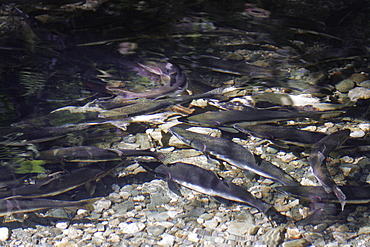
Adult male and female pink salmon (Oncorhynchus gorbuscha - nicknamed the "Humpbacked salmon") spawning in a stream in southeast Alaska, USA.
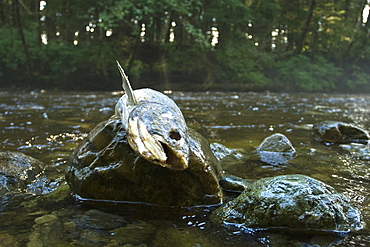
Dead and dying pink salmon (Oncorhynchus gorbuscha) gathering after the spawn just outside of Sitka, Southeast Alaska, USA
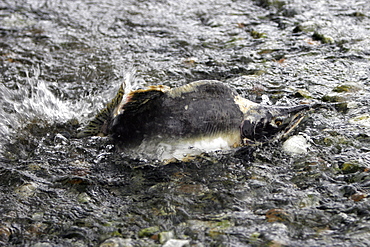
Adult male pink salmon (Oncorhynchus gorbuscha - nicknamed the "Humpbacked salmon") struggling to swim upstream to spawn in a stream in southeast Alaska, USA.

Adult brown bear (Ursus arctos) foraging for spawning sockeye salmon at the Brooks River in Katmai National Park near Bristol Bay, Alaska, USA. Pacific Ocean
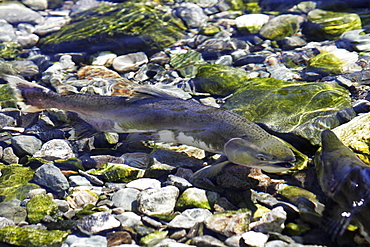
Adult male and female pink salmon (Oncorhynchus gorbuscha - nicknamed the "Humpbacked salmon") spawning in a stream in southeast Alaska, USA.

Adult brown bear (Ursus arctos) foraging for spawning sockeye salmon at the Brooks River in Katmai National Park near Bristol Bay, Alaska, USA. Pacific Ocean

Adult brown bear (Ursus arctos) foraging for spawning sockeye salmon at the Brooks River in Katmai National Park near Bristol Bay, Alaska, USA. Pacific Ocean
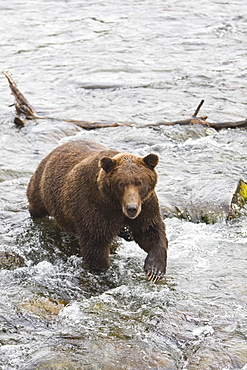
Adult brown bear (Ursus arctos) foraging for spawning sockeye salmon at the Brooks River in Katmai National Park near Bristol Bay, Alaska, USA. Pacific Ocean
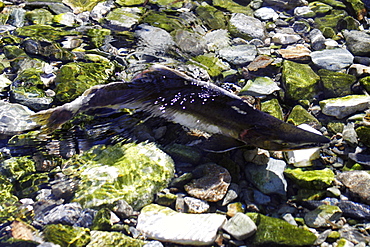
Adult male pink salmon (Oncorhynchus gorbuscha - nicknamed the "Humpbacked salmon") spawning in a stream in southeast Alaska, USA.
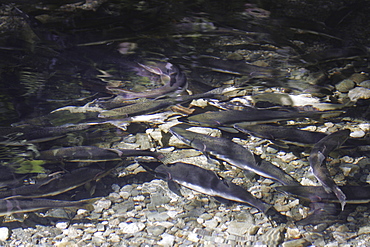
Adult male and female pink salmon (Oncorhynchus gorbuscha - nicknamed the "Humpbacked salmon") spawning in a stream in southeast Alaska, USA.
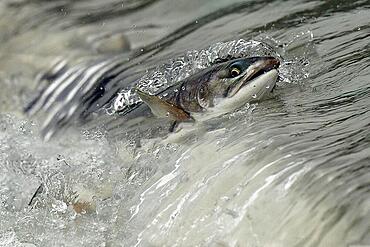
Pink salmon (Oncorhynchus gorbuscha) jumping up a waterfall on their way to spawning grounds, Prince William Sound, Alaska, USA, North America
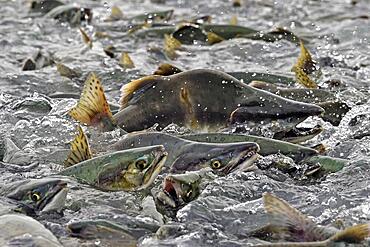
Pink salmons (Oncorhynchus gorbuscha) swim densely packed upstream on their way to spawning grounds, Prince William Sound, Alaska, USA, North America
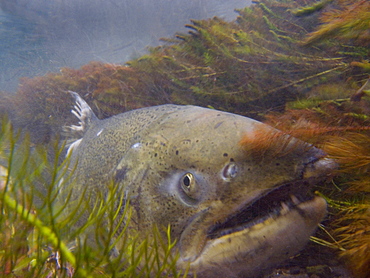
November 7, 2008 Mt Shasta CA A spawned-out Chinook salmon watches over her redd in the Shasta River where it runs through Big Springs Ranch about 2 miles north of the town of Mt Shasta. The ranch, which is contributing to degraded habitat conditions, which actually warm water tempt by upwards of 10 degrees as the river passes through the ranch and then spills into the Klameth, is currently under contract for purchase by TNC, therefor TNC and partner organizations have been allowed to research this stretch of river for the first time. They have discovered that is it a very fertile juvenile rearing area and that there are a surprising number of returning salmon in spite of habitat degraded by grazing cattle (often in the river) and irrigation practices. If this purchase is successful, TNC has the chance to improve a large stretch of habitat and quickly improve conditions that will effect numbers of returning fish and habitat in the Shasta and Klameth Rivers. In California, The Nature Conservancy is focusing its efforts on protecting the Shasta River and its tributaries, which create one of the most important spawning nurseries for Chinook salmon in the entire Klamath Basin, United States of America
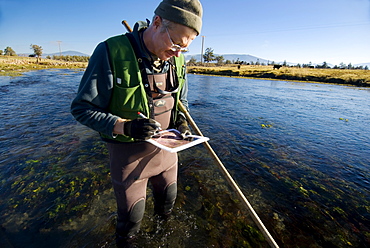
Mt Shasta CA, Big Spring Ranch Bill Chesney from the CA Dept of Fish & Game counting redds in a stretch of river that is heavily grazed by cattle who have full access to the river and often drink and eat in it. Mt Shasta in the background. The Shasta River runs through Big Springs Ranch about 20 miles north of the town of Mt Shasta. The ranch, which is contributing to degraded habitat conditions, and actually warming water temps by upwards of 10 degrees as the river passes through the ranch and then spills into the Klameth, is currently under contract for purchase by TNC. Since the contract began, TNC and partner organizations have been allowed to research this stretch of river for the first time. They have discovered that is it a very fertile juvenile rearing area and that there are a surprising number of returning salmon in spite of habitat degradation by grazing cattle (often in the river) and irrigation practices. If this purchase is successful, TNC has the chance to improve a large stretch of habitat and quickly improve conditions that will effect numbers of returning fish and habitat in the Shasta and Klameth Rivers. The Shasta River and its tributaries create one of the most important spawning nurseries for Chinook salmon in the entire Klamath Basin, United States of America
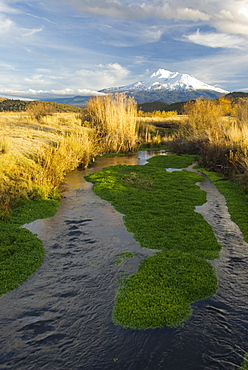
November 12, 2008 Mt Shasta CA, Big Springs ranch The Shasta River as it runs through Big Springs Ranch about 20 miles north of the town of Mt Shasta. The Shasta River and its tributaries create one of the most important spawning nurseries for Chinook salmon in the entire Klamath Basin. The ranch is contributing to degraded habitat conditions, which actually warm water temps by upwards of 10 degrees as the river passes through the ranch and then spills into the Klameth River.This stretch of river is a very fertile juvenile salmon rearing area and that there are a surprising number of returning salmon in spite of habitat degraded by grazing cattle and bad irrigation practices, United States of America
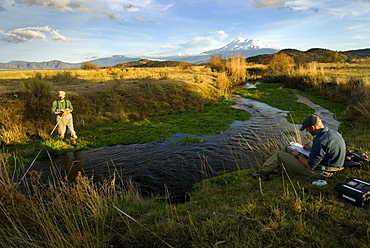
November 12, 2008 Mt Shasta CA, Big Springs ranch Carson Jeffres (rt) Staff Research Associate for UC Davis Center for watershed Sciences, and Andrew Nichols, Jr Specialist (UC Davis Center for watershed Sciences,) conducting research in the Shasta River where it runs through Big Springs Ranch about 20 miles north of the town of Mt Shasta. The ranch, which is contributing to degraded habitat conditions that warm water temps by upwards of 10 degrees as the river passes through the ranch and then spills into the Klameth, is currently under contract for purchase by TNC, therefor TNC and partner organizations have been allowed to research this stretch of river for the first time. They have discovered that is it a very fertile juvenile rearing area and that there are a surprising number of returning salmon in spite of habitat degrated by grazing cattle (often in the river) and irrigation practices. If this purchase is sucessful, TNC has the chance to improve a large stretch of habitiat and qucikly improve conditions that will effect numbers of returning fish and habitiat in the Shasta and Klameth Rivers. The Shasta River and its tributaries create one of the most important spawning nurseries for Chinook salmon in the entire Klamath Basin, United States of America
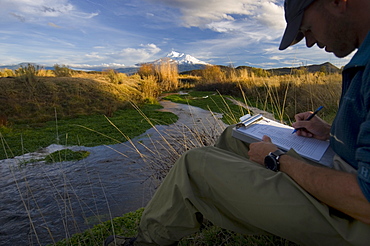
November 12, 2008 Mt Shasta and the Shasta River, Big Springs ranch, CA Carson Jeffres Staff Research Associate for UC Davis Center for watershed Sciences, conducting research in the Shasta River where it runs through Big Springs Ranch about 20 miles north of the town of Mt Shasta. The Shasta River and its tributaries create one of the most important spawning nurseries for Chinook salmon in the entire Klamath Basin. The ranch is contributing to degraded habitat conditions, which actually warm water temps by upwards of 10 degrees as the river passes through the ranch and then spills into the Klameth River.This stretch of river is a very fertile juvenile salmon rearing area and that there are a surprising number of returning salmon in spite of habitat degraded by grazing cattle and bad irrigation practices, United States of America
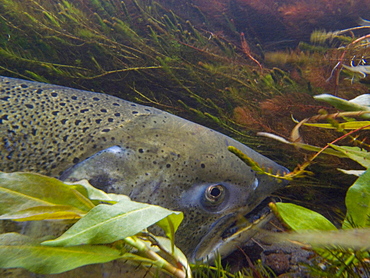
November 7, 2008 Mt Shasta CA A spawned-out Chinook salmon watches over her redd in the Shasta River where it runs through Big Springs Ranch about 2 miles north of the town of Mt Shasta. The ranch, which is contributing to degraded habitat conditions, which actually warm water tempt by upwards of 10 degrees as the river passes through the ranch and then spills into the Klameth, is currently under contract for purchase by TNC, therefor TNC and partner organizations have been allowed to research this stretch of river for the first time. They have discovered that is it a very fertile juvenile rearing area and that there are a surprising number of returning salmon in spite of habitat degraded by grazing cattle (often in the river) and irrigation practices. If this purchase is successful, TNC has the chance to improve a large stretch of habitat and quickly improve conditions that will effect numbers of returning fish and habitat in the Shasta and Klameth Rivers. In California, The Nature Conservancy is focusing its efforts on protecting the Shasta River and its tributaries, which create one of the most important spawning nurseries for Chinook salmon in the entire Klamath Basin, United States of America
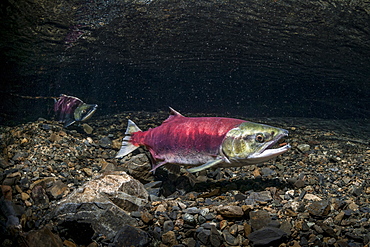
A Female Sockeye Salmon (Oncorhynchus Nerka) Uses Her Anal Fin To Probe Her Redd While A Jack Is Positioned Downstream. Underwater View In An Alaskan Stream During The Summer.
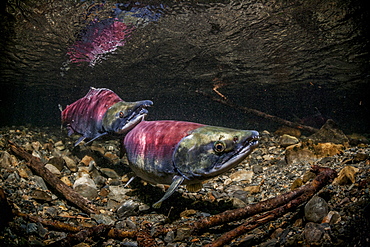
Sockeye Salmon (Oncorhynchus Nerka) Spawning Pair Positioned Over A Redd That Is Under Construction.
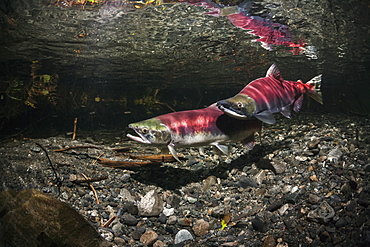
Underwater View Of A Sockeye Salmon (Oncorhynchus Nerka) Spawning Pair And A Challenger Male In Power Creek Near Cordova, Alaska In The Summer, Alaska, United States Of America
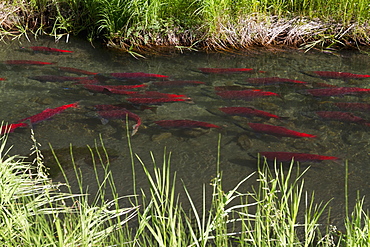
Red Sockeye Salmon (Oncorhynchus Nerka) Turning From Silver To Red After Entering Fresh Water To Spawn In A Small Stream Near Mile 33 Of The Seward Highway In Summertime, South-Central Alaska, Alaska, United States Of America
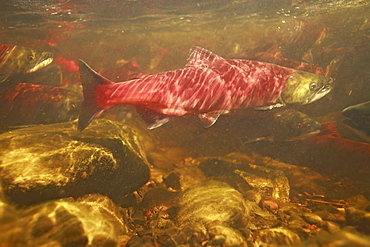
Sockeye salmon underwater on spawning migration, Fulton River Sockeye Salmon spawning enhancement facility, near Granisle, British Columbia
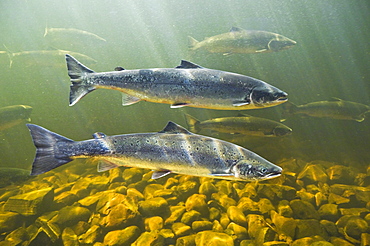
Atlantic Salmon adults migrate from salt water of North Atlantic Ocean upstream through freshwater of their natal river to reach spawning grounds, Exploits River, Newfoundland
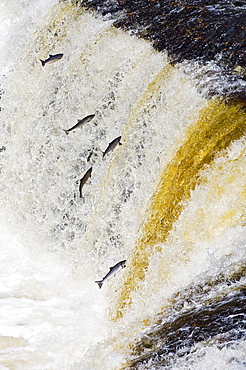
Atlantic Salmon adults leap up Falls while Migrating upstream to Spawning Grounds, Humber River, Newfoundland
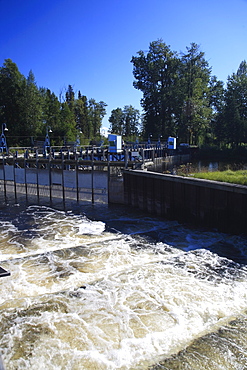
Fulton River Sockeye Salmon spawning enhancement facility, the largest of its kind in the world, Babine River, near Granisle, British Columbia
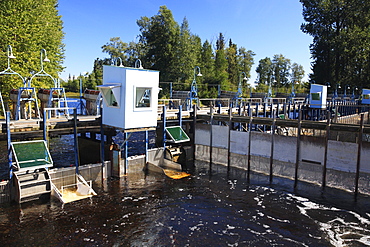
Salmon counting fence at Fulton River Enhancement Facility, the largest sockeye spawning channel in the world, Granisle, British Columbia
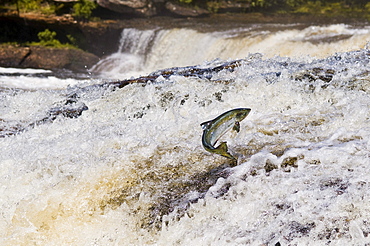
Atlantic Salmon adult leaps up Falls Migrating Upstream to Spawning Grounds, Humber River, Newfoundland
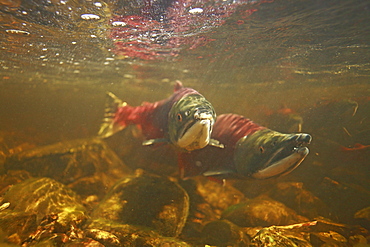
Sockeye salmon underwater on spawning migration, Fulton River Sockeye Salmon spawning enhancement facility, near Granisle, British Columbia
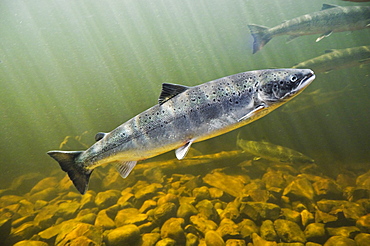
Atlantic Salmon adults migrate from salt water of North Atlantic Ocean upstream through freshwater of their natal river to reach spawning grounds, Exploits River, Newfoundland
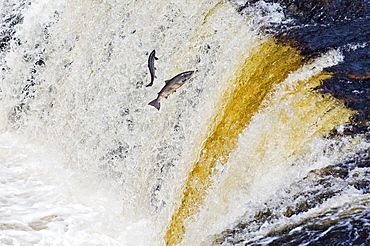
Atlantic Salmon adults leap up Falls while Migrating upstream to Spawning Grounds, Humber River, Newfoundland
